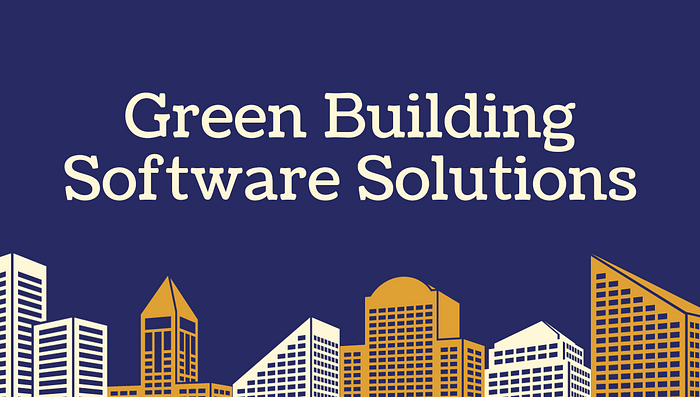The Role of Green Building Software Solutions in Construction
In the age of heightened environmental consciousness, the construction industry is embracing sustainable practices with a keen focus on green building solutions. Green building software solutions have emerged as a pivotal enabler in this endeavor, revolutionizing the way construction projects are conceptualized, planned, and executed. This article explores the significance of green building software solutions, with a particular emphasis on the role of construction estimating software, referencing the insights provided in the article “Green Building Software: Transforming the Construction Landscape” by Conwize.
The Green Building Software Revolution:
Holistic Project Planning:
Green building software solutions play a central role in fostering sustainability right from the project’s inception. These tools offer features that facilitate the integration of sustainable practices into the project planning phase. From site selection and design considerations to material choices, green building software provides a holistic approach to construction, aligning with eco-friendly standards.

Conwize’s Insights:
The article by Conwize, “Green Building Software: Transforming the Construction Landscape,” delves into the ways in which green building software is reshaping construction practices. It emphasizes the importance of adopting a sustainable mindset from the initial stages of a project. Conwize highlights how these software solutions contribute to creating environmentally responsible buildings, and particularly, the impact of construction estimating software on achieving green building goals.
Construction Estimating Software and Green Building:
Material Selection for Sustainability:
Construction estimating software, such as Conwize, enables builders to make informed decisions regarding material choices. The software considers not only the cost implications but also the environmental impact of materials. This includes assessing the life cycle of materials, their recyclability, and overall sustainability. The integration of green building criteria into estimating software ensures that every aspect of the project aligns with eco-friendly objectives.
Energy-Efficient Design:
Green building software aids in the estimation of costs associated with energy-efficient design elements. Whether it’s incorporating solar panels, energy-efficient HVAC systems, or advanced insulation materials, construction estimating software considers the financial implications of these sustainable features. This promotes the adoption of energy-efficient solutions that contribute to reduced environmental impact and long-term cost savings.
Beyond Estimation: Other Ways Green Building Software Solutions Contribute:
Real-Time Collaboration for Sustainability:
Green building software promotes real-time collaboration among project stakeholders. This collaborative environment enhances communication, allowing architects, engineers, contractors, and other professionals to work together seamlessly. The ability to share sustainability goals and track progress in real-time ensures that everyone involved in the project is aligned with eco-friendly objectives.
Data-Driven Decision-Making:
Data is a powerful tool in the quest for sustainability. Green building software solutions leverage data analytics to provide insights into the environmental impact of various decisions. From energy consumption patterns to material sourcing, data-driven decision-making ensures that every choice contributes to the overall sustainability of the project.
Compliance with Green Building Standards:
Green building software solutions help ensure compliance with green building standards and certifications. These tools integrate the criteria of widely recognized certification programs, such as LEED (Leadership in Energy and Environmental Design) or BREEAM (Building Research Establishment Environmental Assessment Method), into the planning and execution phases. This ensures that construction projects meet stringent sustainability benchmarks.
Waste Reduction Strategies:
Reducing construction waste is a crucial aspect of green building. Green building software facilitates waste reduction strategies by optimizing material usage and minimizing over-ordering. Accurate estimation tools contribute to a leaner construction process, reducing the environmental impact associated with excess waste generation.
Embracing a Sustainable Future:
Enhanced Life Cycle Assessment:
Green building software solutions empower construction professionals to conduct comprehensive life cycle assessments. Beyond the construction phase, these tools consider the environmental impact of buildings throughout their entire life cycle. This holistic approach allows for the identification of areas where sustainability measures can be improved over time.
Continuous Improvement Through Feedback Loops:
Green building software establishes feedback loops that contribute to continuous improvement. Post-construction, data on the performance of sustainable features, energy efficiency, and overall environmental impact are collected. This information feeds back into future projects, enabling the construction industry to refine and enhance sustainable practices continually.
Green building software solutions represent a pivotal shift towards a more sustainable and eco-conscious construction industry. As highlighted in Conwize’s article, the role of construction estimating software in achieving green building goals is particularly noteworthy. Beyond estimation, these software solutions foster collaboration, data-driven decision-making, and compliance with sustainability standards. By embracing green building software, the construction industry is not just building structures; it is constructing a more sustainable and resilient future for generations to come.
